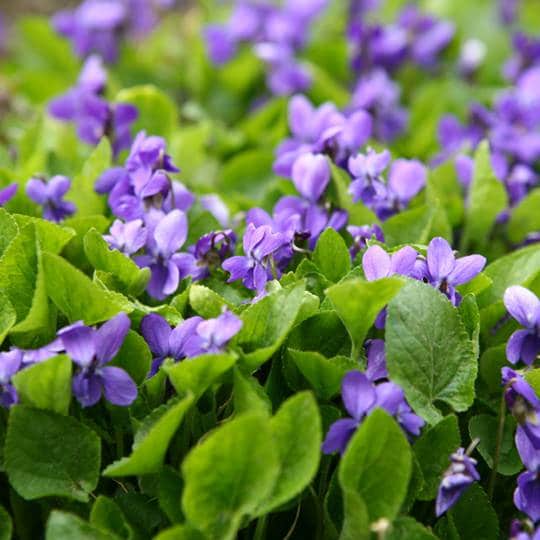
Wild violets (viola papilionacea, viola sororia) are low-growing perennials that bloom in mid-May. While some people consider them a lovely decorative plant for gardens and landscaping, others consider them a bothersome weed because they display an aggressive behavior that is very hard to control. These persistent perennials have dense, fibrous root systems and are typically found in moist, shady areas, but can also grow in sunny, arid areas. The flowers and leaves are edible and are thought to possess medicinal qualities. High in vitamins A and C, the leaves are sometimes used in salads or cooked as greens. The flowers can be candied, and add color when tossed into a salad.
Wild Violet Signs and Symptoms
The springtime flowers are usually violet in color, but can range from deep blue all the way to white. Common blue and wooly blue violets can have a purple, blue, or violet color, while confederate violets have white petals that are tinged with violet on the inside. There are also some yellow violets. Each flower appears on its own leafless stalk. This broadleaf plant has waxy, serrated leaves that are oblong and come to a point at the tip.
Underneath the ground, wild violets have thick clumps of underground stems, called rhizomes, which store water and help make the plant drought resistant. These rhizomes are hardy survivors that send forth new shoots when the plant is plucked from above.
Wild Violet Prevention
Why are so many people not wild about wild violets? These pretty little perennials freely self-seed (they don’t need to bloom to reproduce) and can quickly take over a lawn. And since the waxy leaves are resistant to many common herbicides (the shiny coating makes it hard for the chemicals to stick), the aggressive behavior can get out of control fast. So what can you do?
The best defense is a healthy well-maintained lawn, as dense grass will help keep the roots of wild violets from spreading.
Fall is the best time to tackle these invaders. Spot treatments with herbicides work best for smaller invasions, but must be applied with care or your lawn can fall prey to brown spots. Repeated applications will be necessary. In order to get the herbicide to stick better to the waxy leaf surface, try mixing in dish soap—about a tablespoon per gallon of spray.
Call Cardinal Lawns today to discuss how they can make your lawn look its best.
Need Help with Wild Violet?
Call Cardinal Lawns today at 614-808-4446 and let's talk about how we can help treat for Wild Violet and other common Ohio lawn weeds.
Get a Free Quote